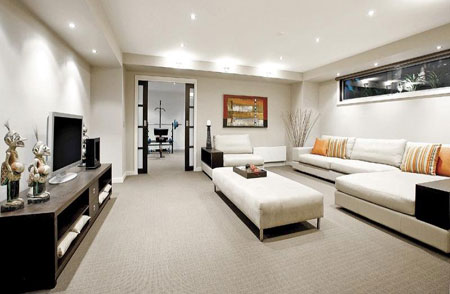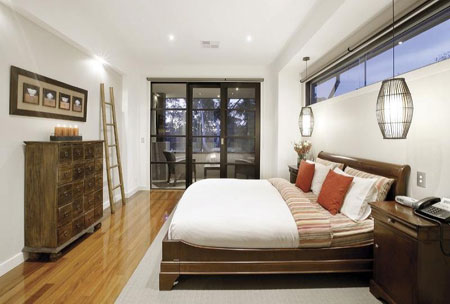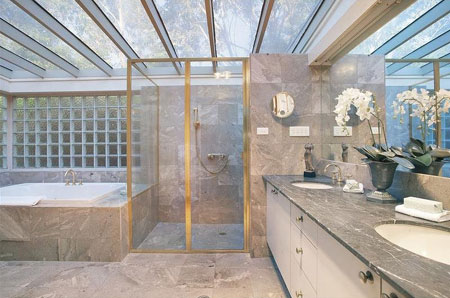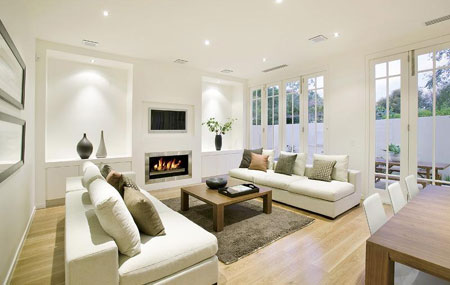Designing your dream home
Designing your dream home with only the developer's floor plan for reference can be overwhelming. Here's a guide to making even the most difficult design decisions with all the confidence of a pro.
Setting design goals
Before the decision-making process begins, it's important to create a vision of what you want your new home to be – and do some prep work before your first design appointment.
- Build a scrapbook of magazine clippings with colours and styles you like – everything from flooring to taps and fixtures.
- Visit design centres in other developments. You will normally find that as the market picks up, so will development building and you're likely to find quite a few on offer on the same day.
- Create a needs and wants list and once you have sat down and gone over your budget you can start to look at those 'wants' that you can afford.
- Take advantage of marketing tools, such as online visual tours and interior renderings, as well as open houses and browsing days.
- Go to the development's design centre and look around. Don't be afraid to ask questions about the products on offer. Take pictures of everything, then go home and take it all in before you make any final decision.
Layout liabilities
Make sure you look very carefully at how the space is planned out. The floor plan is a map to your new home: try to visualise ceiling height, room size, sightlines, and the flow of light and traffic throughout. Here are some other things to keep an eye on.
- Are the passages too dark? This would be the best time to look at the option for having a skylight fitted..
- Are there awkward areas, like unusable nooks? Ask the developer about other cumbersome features that may not appear on the layout, such as bulkheads, which can make it hard to hang draperies.
- Is there enough storage? Has consideration been given to adding built-ins, or are there places you can adapt for storage, like the area under a stairway.
- Will you be able to tailor the space to your needs, or is it so rigid that you won’t have any flexibility? If there’s a formal dining room, could it become something else if you don’t entertain? If there’s a den, could it be opened up to give you a larger living area?
- How many bathrooms are there? Look at the ratio of bedrooms to bathrooms - especially if you have small children.
Shed some light
Most new-development homes have limited lighting. There’s often only one fixture in the entry hall, one in the bathroom and one in the kitchen. Here are three ways to ensure your new home is well lit.
- Engage a professional to do a proper lighting plan and make sure it’s coordinated throughout. To put light fixtures in after the fact is often impossible. If you discuss this with the lighting contractor you can have everything sorted before you move in.
- Consider the amount of natural light your home is going to get. Then ensure there are provisions for task, ambient and decorative lighting. Find out if fixtures are energy efficient, or if they can be replaced with compact fluorescents.
Choosing upgrades
How you upgrade depends on how long you plan to live in your new home. If you hope to move in a few years, choose upgrades that are visual and important for resale, such as fancy taps in your kitchen versus underpadding for your carpets.
short-term
- Look for things of value that will set your homes apart. If you’re going with granite, it may be a worthwhile investment to select a higher quality of granite.
- Add things people can see, like an attractive backsplash in the kitchen or tile on the stair risers – things you notice right away.
long-term
- Do things that are harder to change later, such as putting in pot lights, adding laminate floors throughout, upgrading to a fully tiled bathroom, or switching to a more durable carpet.
- Look for items of convenience or choose something you’ve always wanted, like a gas hob, or spa bath.
- Choose things that fit your lifestyle, like soft-close drawers.
The dos and don’ts of new-home design
DO select a neutral palette when it comes to choosing architectural finishes. People like to add colour when selecting finishes, but they often tire of the colour quickly. Add it later, with art, an accessory or an area rug.
DON'T develop your design around things like the colour of your existing towels when choosing items like tiles or countertops. The least expensive way to change the look of a room is through paint, accessories and fabric
DO follow up after your initial selection appointment to make sure nothing got missed.
DO read your contract before you sign. It’s all there in writing, so don’t miss that opportunity to ask questions or address any concerns.
via styleathome




